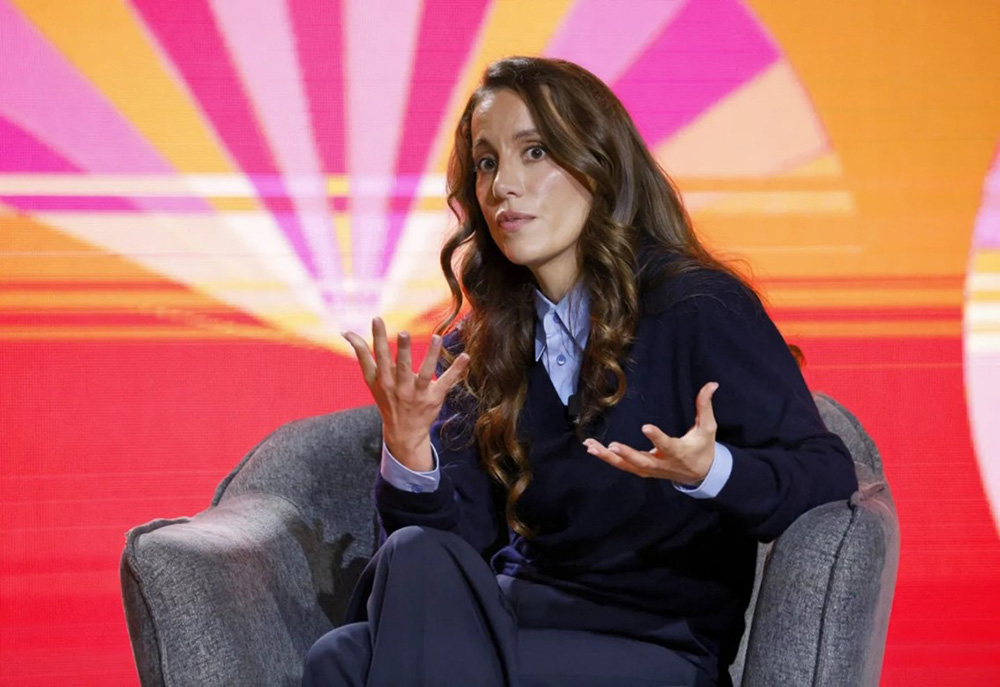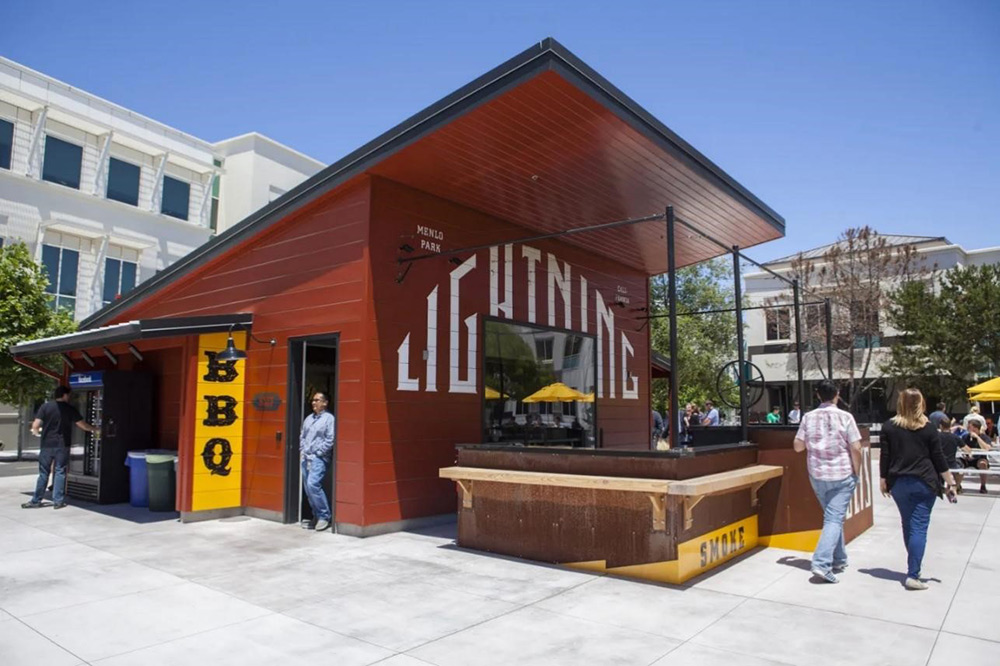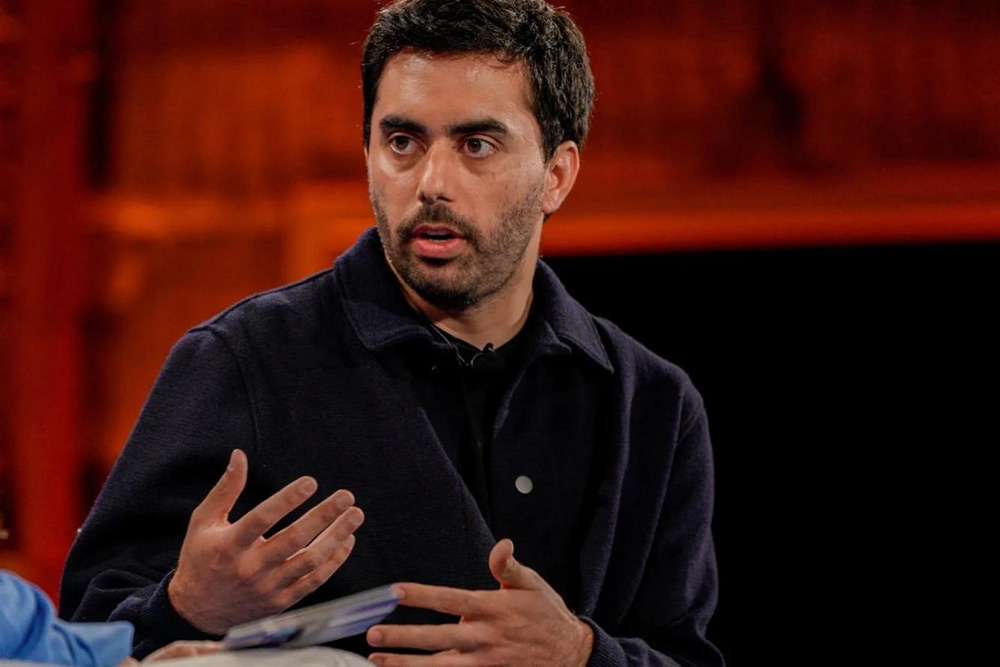
去年,OpenAI首席技術(shù)官米拉·穆拉蒂離職創(chuàng)辦了一家初創(chuàng)公司,,這完全符合硅谷備受推崇的創(chuàng)業(yè)劇本,。數(shù)月后,包括聯(lián)合創(chuàng)始人約翰·舒爾曼(John Schulman)在內(nèi)的19名OpenAI現(xiàn)任和前任員工宣布加入穆拉蒂的Thinking Machines,,這生動展現(xiàn)了硅谷的另一傳統(tǒng):每一波新技術(shù)浪潮都會伴隨著激烈的人才爭奪戰(zhàn),。
隨著人工智能熱潮席卷科技行業(yè)并重塑商業(yè)戰(zhàn)略,各方競相鎖定那些具備夢寐以求的技術(shù)技能和專業(yè)知識的專家,。過去兩年間,,各企業(yè)如同在戰(zhàn)場上追逐珍稀資源般尋覓頂尖人工智能研究人員和工程師,,像穆拉蒂這樣從前雇主那里挖走人才的招聘行動,是高風(fēng)險運(yùn)作的典型例子,。最為激烈的爭奪集中在一小部分人工智能研究科學(xué)家身上——據(jù)《財富》雜志采訪的幾位業(yè)內(nèi)人士估計,,全球具備構(gòu)建當(dāng)今最先進(jìn)的大型語言模型資質(zhì)的人才不到1000人。
風(fēng)險投資公司門羅風(fēng)投(Menlo Ventures)的合伙人提姆·堤利(Tim Tully)表示,,D輪融資階段的初創(chuàng)企業(yè)給予這些科學(xué)家的股票獎勵可能介于200萬至400萬美元之間,。堤利說:“這在四年前我招募研究科學(xué)家時是難以想象的?!彼?0月份進(jìn)行的人工智能人才調(diào)查發(fā)現(xiàn),,從事基礎(chǔ)人工智能研究和理論推進(jìn)工作的人工智能研究科學(xué)家手握進(jìn)入頂級公司的黃金入場券。
據(jù)報道,,像Meta的馬克·扎克伯格這樣的首席執(zhí)行官都親自出馬,,招攬人工智能領(lǐng)域的頂尖人才。而像興盛資本(Thrive Capital)的約書亞·庫什納(Joshua Kushner)這樣有影響力的風(fēng)投投資者則不得不采取防御措施,,力圖說服OpenAI員工相信留任原公司在經(jīng)濟(jì)上更為有利,。(庫什納未回應(yīng)置評請求。)為了與大型上市公司競爭,,初創(chuàng)公司定期舉辦與私人買家的套現(xiàn)活動,,使員工能夠更快變現(xiàn)所持部分股權(quán)。
除了經(jīng)濟(jì)激勵之外,,與業(yè)界領(lǐng)袖的私人關(guān)系以及對人工智能不同理念的堅持,,為硅谷最新一輪人才爭奪戰(zhàn)披上了一層部落競爭的色彩。從開源到人工智能安全保障,,不同參與者所秉持的價值觀及其領(lǐng)導(dǎo)者的聲譽(yù),,重塑了招聘準(zhǔn)則,并催生了一系列資金雄厚的初創(chuàng)公司,,這些公司由穆拉蒂、她在OpenAI的前同事伊爾亞·蘇茨克維(Ilya Sutskever)以及被譽(yù)為“人工智能教母”的斯坦福大學(xué)李飛飛等備受尊崇的創(chuàng)始人領(lǐng)導(dǎo),。
人工智能人才供應(yīng)不足與大型科技公司和初創(chuàng)公司對人工智能人才的迫切需求之間的不平衡,,給迅猛發(fā)展的人工智能行業(yè)帶來了緊迫挑戰(zhàn)。隨著科技公司和投資者向芯片和數(shù)據(jù)中心投入數(shù)百億美元,,為人工智能服務(wù)提供動力,,并尋找數(shù)據(jù)和能源來訓(xùn)練更強(qiáng)大的人工智能模型,能否吸引這一小部分人才成為競爭中難以預(yù)料但可能至關(guān)重要的變數(shù),。
更多資金流動,,更少自助餐廳
上一次硅谷為工程人才展開的爭奪戰(zhàn)發(fā)生在2010年代,當(dāng)時谷歌和臉書(Facebook)展開了一場全面的員工福利軍備競賽,,雙方都試圖在公司園區(qū)內(nèi)的壽司吧,、咖啡師服務(wù),、其他免費(fèi)餐廳、現(xiàn)場按摩師以及健身和武術(shù)課程等方面超越對手,。
十五年過去了,,成千上萬人被裁員,如今的人才爭奪戰(zhàn)已不再以比拼自助餐廳菜單為手段,。如今備受追捧的人工智能精英更為稀缺,,且更具專業(yè)性,各公司正通過其他方式展開激烈角逐,。
雖然公司使命和同事團(tuán)隊一直是科技行業(yè)招聘的重要吸引力,,但在人工智能領(lǐng)域,從業(yè)者熱衷于討論從通用人工智能(AGI)到開源模型等各類話題,,因此尋覓志同道合的人才至關(guān)重要,。

Anthropic是最早從OpenAI分離出來的人工智能初創(chuàng)公司之一,其誕生源于創(chuàng)始人對OpenAI在技術(shù)安全性和商業(yè)化方面的做法存在異議,。許多離開OpenAI加入穆拉蒂的Thinking Machines的人,,是出于對這位出生于阿爾巴尼亞的創(chuàng)始人的忠誠(或許也因那里據(jù)傳提供的股票期權(quán)幾乎無鎖定期且行權(quán)價近乎為零)。
人工智能視頻初創(chuàng)公司Runway的聯(lián)合創(chuàng)始人兼首席執(zhí)行官克里斯托瓦爾·巴倫蘇埃拉(Cristobal Valenzuela)強(qiáng)調(diào)了文化和使命契合的重要性,。他說:“我們的專長,,以及吸納的自不同研究實驗室的人才,都是非常關(guān)注藝術(shù)與科學(xué)交叉領(lǐng)域的人,?!彼€補(bǔ)充稱,在少數(shù)情況下,,那些被其他公司挖走的候選人后來又回到了Runway,,因為他們意識到這才是正確的選擇。
風(fēng)險投資公司Asymmetric的管理合伙人羅布·比德曼(Rob Biederman)表示:“頂尖人才希望解決重大問題并能產(chǎn)生重大影響,?!彼f,這對初創(chuàng)公司而言往往是與老牌科技巨頭競爭的一大優(yōu)勢:“這并非針對蘋果,,我只是好奇,,在那樣的組織架構(gòu)下,你能否有機(jī)會產(chǎn)生重大影響,?”
蘋果未回應(yīng)就這一問題發(fā)表看法的請求,。該公司似乎在吸引人工智能人才方面取得了成功——至少在從科技巨頭競爭對手谷歌挖人這方面是如此。自2018年以來,,蘋果至少從谷歌挖走了36名人工智能專家,,其中包括伊恩·古德費(fèi)羅(Ian Goodfellow),,他曾在蘋果工作過一段時間,然后于2022年重返谷歌,,在DeepMind擔(dān)任研究科學(xué)家,。而谷歌在這場競爭中也竭力擴(kuò)充人才隊伍。諾姆·沙澤爾(Noam Shazeer)是人工智能行業(yè)開創(chuàng)性論文《Transformer》的合著者之一,,他在2021年辭去谷歌軟件工程師的職位,,創(chuàng)辦了CharacterAI。在2024年,,谷歌以20億美元的“人才收購”交易將他及數(shù)名團(tuán)隊成員重新招致麾下,。
隨著越來越多的人工智能初創(chuàng)公司加入這場競爭,人才供需失衡的情況愈發(fā)嚴(yán)重,。除了像OpenAI,、谷歌、Meta,、Anthropic和亞馬遜這樣的大型人工智能模型公司外,,還有數(shù)十家資金雄厚的后期人工智能初創(chuàng)公司,如Databricks,、Perplexity,、Glean、Harvey和Writer,,以及像埃隆·馬斯克的X.AI和蘇茨克維的Safe Superintelligence等熱門新公司,。
為了與大公司競爭,私營初創(chuàng)公司為員工提供機(jī)會,,將其股權(quán)的部分賬面價值變現(xiàn),。Thomvest Ventures的董事總經(jīng)理烏梅什·帕德瓦爾(Umesh Padval)表示,OpenAI在這方面尤為活躍,,多次發(fā)起收購要約,,使員工能夠?qū)⒉糠止煞莩鍪劢o私人投資者。通常情況下,,初創(chuàng)公司或私營公司員工只能等到公司首次公開募股(IPO)或被收購時才能實現(xiàn)股權(quán)變現(xiàn),。
帕德瓦爾說:“這很不尋常?!彼€補(bǔ)充稱,如今其他人工智能公司也開始采用同樣的策略,,通過提高股權(quán)激勵的吸引力在招聘市場中保持競爭力,。
即便是初級和中級人工智能人才,現(xiàn)金薪酬也在飆升,。曾在Meta,、帕蘭提爾科技(Palantir),、谷歌和亞馬遜內(nèi)部從事人工智能人才招聘工作的加勒特·金特里(Garett Gentry)表示:“就眾多通用人工智能和機(jī)器人領(lǐng)域的初創(chuàng)公司提供的薪酬而言,以往基本薪資可能是25萬美元,,但如今競爭更為激烈了——我看到基本薪資35萬美元甚至更高的薪資報價,,這大致與FAANG(指臉書、亞馬遜,、蘋果,、網(wǎng)飛和谷歌)實驗室中擁有博士學(xué)位且有五年工作經(jīng)驗的人的薪資水平相當(dāng)?!?/p>

學(xué)術(shù)界人士的崛起
如今最搶手的人工智能研究科學(xué)家通常來自學(xué)術(shù)界,主要是計算機(jī)科學(xué),、數(shù)學(xué),、統(tǒng)計學(xué)或神經(jīng)科學(xué)領(lǐng)域的博士。門羅風(fēng)投的堤利表示,,過去在科技公司里,,他們的薪資往往并非最高,占據(jù)薪資金字塔頂端的是負(fù)責(zé)產(chǎn)品交付的軟件工程師,。
如今,,情況發(fā)生了變化,研究科學(xué)家成了行業(yè)焦點,。隨著科技公司資助高校的人工智能研究,,并且近期以高薪吸引博士及其團(tuán)隊加盟,這些科學(xué)家從學(xué)術(shù)界進(jìn)入科技行業(yè)的道路已然鋪就,。
金特里說:“你可以想象一下,,加州大學(xué)伯克利分校的資深學(xué)者攜其眾多學(xué)生加入了像Databricks這樣的灣區(qū)科技公司?!彼固垢4髮W(xué)教授李飛飛近期與前學(xué)生賈斯汀·約翰遜(Justin Johnson)聯(lián)合創(chuàng)辦了人工智能初創(chuàng)公司W(wǎng)orld Labs,,約翰遜還引薦了另兩位創(chuàng)始團(tuán)隊成員:曾在亞馬遜和Meta現(xiàn)實實驗室工作的克里斯托夫·拉斯納(Christoph Lassner),以及在谷歌擔(dān)任資深研究科學(xué)家期間研發(fā)出名為NeRF強(qiáng)大技術(shù)的本·米爾登霍爾(Ben Mildenhall),。
金特里在一封電子郵件中表示:“除了博士生導(dǎo)師式的指導(dǎo)或?qū)W術(shù)領(lǐng)導(dǎo)關(guān)系外,,人工智能/科學(xué)研究在諸多層面本質(zhì)上都具有社交屬性?!彼枋隽酥救は嗤兜难芯咳藛T聚在一起的傾向,,“雖然科學(xué)家獨(dú)立開展實驗,但更廣泛的研究環(huán)境從根本上來說是協(xié)作性的:同行評審期刊,、與更廣泛的科學(xué)界分享/驗證想法,、追求社會影響力,以及更廣泛的倫理背景,?!?/p>
這一理念對那些傾向于保密的科技公司來說可能是個挑戰(zhàn),。盡管包括OpenAI和Anthropic在內(nèi)的許多人工智能公司允許員工發(fā)表有關(guān)人工智能安全等主題的研究成果并在會議上展示,但由于對競爭和知識產(chǎn)權(quán)的擔(dān)憂,,與人工智能模型內(nèi)部運(yùn)作相關(guān)的研究成果發(fā)布通常會受到限制,。Meta試圖將這種情況轉(zhuǎn)化為自身優(yōu)勢。Meta首席科學(xué)家,、Meta基礎(chǔ)人工智能研究(FAIR)實驗室創(chuàng)始人楊立昆(Yann LeCun)去年在接受《財富》雜志采訪時指出,,該團(tuán)隊廣泛且公開地發(fā)表研究成果,這是吸引科學(xué)家加入Meta的“一個重要理由”,。
楊立昆表示:“如果你告訴科學(xué)家‘來為我們工作,,但不能談?wù)撃闼龅氖虑椤麄儠杏X自己仿佛被困于‘黃金牢籠’中,其研究聲譽(yù)也將隨之消逝,?!?/p>
近期一個很好的例子是DeepMind研究員尼古拉斯·卡利尼(Nicholas Carlini),他上周宣布將加入Anthropic——但只承諾效力一年,。在2018年獲得博士學(xué)位后,,他加入了谷歌大腦項目(Google Brain),他在上周的一篇職業(yè)動態(tài)更新博文中表示,,這是他“夢想中的工作”,。然而,他透露,,在過去幾年里,,論文獲準(zhǔn)在期刊上發(fā)表的過程“變得比我剛加入時困難得多”,并補(bǔ)充稱,,他能夠發(fā)表論文的唯一途徑是“我甘愿冒著違規(guī)風(fēng)險,,強(qiáng)行推進(jìn)”。
招募并留住人工智能人才至關(guān)重要
Runway首席執(zhí)行官巴倫蘇埃拉表示,,他投入大量時間進(jìn)行人才招募,。“我仍然會面試每位候選人,,并主動聯(lián)絡(luò)那些我最希望共事的優(yōu)秀人才,。”他補(bǔ)充道,,有時招募理想人才需耗時數(shù)年,。他說:“今天早上我剛面試了一位我們已關(guān)注一年半、來自大型研究實驗室的候選人,。我們正努力敲定這件事,,希望能如愿以償?!?/p>
風(fēng)險投資公司也深度參與到人才招募中,,其人才團(tuán)隊負(fù)責(zé)建立人脈關(guān)系并進(jìn)行面試。比德曼表示,,他努力構(gòu)建一個持續(xù)的人才輸送渠道,。他說:“作為一名風(fēng)險投資人,你的核心職責(zé)幾乎等同于人才獵尋,?!?/p>

金特里專門負(fù)責(zé)招聘在機(jī)器學(xué)習(xí),、計算機(jī)視覺、機(jī)器人技術(shù)及其他人工智能領(lǐng)域具有專業(yè)知識的科學(xué)家和工程師,。他表示,,人才搜尋工作引領(lǐng)他遍訪全球,包括參加頂尖學(xué)術(shù)研究會議,。他說:“有固定的會議日程安排,。參加這些會議至關(guān)重要,這樣能洞悉最前沿的技術(shù)動態(tài),,融入這個社群,,洞察最新進(jìn)展——這些場合正是結(jié)識人才的機(jī)遇?!?/p>
部分人工智能初創(chuàng)公司應(yīng)對人才爭奪戰(zhàn)的方式是前往精英人才所在之地,,并為他們提供與同胞緊密合作的獨(dú)特機(jī)會。例如,,據(jù)報道,,伊爾亞·蘇茨克維的Safe Superintelligence只有20名員工(他們都沒有在社交媒體上分享自己的就業(yè)狀況),其中包括最近在特拉維夫開設(shè)的辦公室里的六名研究人員,。據(jù)報道,,該公司對以色列員工的招募依賴于朋友與前軍隊同事間的口口相傳,數(shù)名新招募的員工來自Google Research特拉維夫研究分部或以色列頂尖學(xué)府,,憑借他們在數(shù)學(xué)與物理領(lǐng)域的專長而被錄用,。
總部位于特拉維夫的人工智能模型初創(chuàng)公司Decart專注于加快人工智能訓(xùn)練,目前估值已達(dá)5億美元,。該公司聯(lián)合創(chuàng)始人兼首席產(chǎn)品官摩西·沙萊夫(Moshe Shalev)表示,,當(dāng)?shù)貙敿馊瞬诺臓帄Z異常激烈,各家公司均在同一批人工智能研究人員中爭搶人才,。他解釋道,,以色列正努力擴(kuò)大人才儲備,不僅從高校和科技公司招募人才,還從曾在以色列國防軍網(wǎng)絡(luò)安全部門8200部隊服役的數(shù)學(xué)和計算機(jī)科學(xué)專家中招募,?!拔覀冸m較晚加入這場競爭,但還不算太晚,?!彼f,并補(bǔ)充道,,Decart已在以色列招募了超過18名人工智能研究人員,,其中包括前谷歌和蘋果的員工。
沒有跡象表明人工智能人才爭奪戰(zhàn)會停止
目前,,沒有跡象表明對頂尖人工智能人才的爭奪會在短期內(nèi)平息,,也沒有跡象表明任何一家公司——無論是初創(chuàng)公司還是科技巨頭——擁有難以逾越的優(yōu)勢。事實上,,隨著越來越多初創(chuàng)公司從人工智能領(lǐng)軍企業(yè)中分離出來,,且人工智能技術(shù)突破的步伐日益加快,競爭勢必愈發(fā)白熱化,。這意味著推動這些技術(shù)突破的人才變得更加珍貴,。
Asymmetric的比德曼表示:“在科技領(lǐng)域深耕越久,你就會發(fā)現(xiàn)人才是唯一的核心要素,。領(lǐng)軍企業(yè)會壟斷人才,。”(財富中文網(wǎng))
譯者:中慧言-王芳
去年,,OpenAI首席技術(shù)官米拉·穆拉蒂離職創(chuàng)辦了一家初創(chuàng)公司,,這完全符合硅谷備受推崇的創(chuàng)業(yè)劇本。數(shù)月后,,包括聯(lián)合創(chuàng)始人約翰·舒爾曼(John Schulman)在內(nèi)的19名OpenAI現(xiàn)任和前任員工宣布加入穆拉蒂的Thinking Machines,,這生動展現(xiàn)了硅谷的另一傳統(tǒng):每一波新技術(shù)浪潮都會伴隨著激烈的人才爭奪戰(zhàn)。
隨著人工智能熱潮席卷科技行業(yè)并重塑商業(yè)戰(zhàn)略,,各方競相鎖定那些具備夢寐以求的技術(shù)技能和專業(yè)知識的專家,。過去兩年間,各企業(yè)如同在戰(zhàn)場上追逐珍稀資源般尋覓頂尖人工智能研究人員和工程師,,像穆拉蒂這樣從前雇主那里挖走人才的招聘行動,,是高風(fēng)險運(yùn)作的典型例子。最為激烈的爭奪集中在一小部分人工智能研究科學(xué)家身上——據(jù)《財富》雜志采訪的幾位業(yè)內(nèi)人士估計,,全球具備構(gòu)建當(dāng)今最先進(jìn)的大型語言模型資質(zhì)的人才不到1000人,。
風(fēng)險投資公司門羅風(fēng)投(Menlo Ventures)的合伙人提姆·堤利(Tim Tully)表示,D輪融資階段的初創(chuàng)企業(yè)給予這些科學(xué)家的股票獎勵可能介于200萬至400萬美元之間,。堤利說:“這在四年前我招募研究科學(xué)家時是難以想象的,?!彼?0月份進(jìn)行的人工智能人才調(diào)查發(fā)現(xiàn),從事基礎(chǔ)人工智能研究和理論推進(jìn)工作的人工智能研究科學(xué)家手握進(jìn)入頂級公司的黃金入場券,。
據(jù)報道,,像Meta的馬克·扎克伯格這樣的首席執(zhí)行官都親自出馬,招攬人工智能領(lǐng)域的頂尖人才,。而像興盛資本(Thrive Capital)的約書亞·庫什納(Joshua Kushner)這樣有影響力的風(fēng)投投資者則不得不采取防御措施,,力圖說服OpenAI員工相信留任原公司在經(jīng)濟(jì)上更為有利。(庫什納未回應(yīng)置評請求,。)為了與大型上市公司競爭,初創(chuàng)公司定期舉辦與私人買家的套現(xiàn)活動,,使員工能夠更快變現(xiàn)所持部分股權(quán),。
除了經(jīng)濟(jì)激勵之外,與業(yè)界領(lǐng)袖的私人關(guān)系以及對人工智能不同理念的堅持,,為硅谷最新一輪人才爭奪戰(zhàn)披上了一層部落競爭的色彩,。從開源到人工智能安全保障,不同參與者所秉持的價值觀及其領(lǐng)導(dǎo)者的聲譽(yù),,重塑了招聘準(zhǔn)則,,并催生了一系列資金雄厚的初創(chuàng)公司,這些公司由穆拉蒂,、她在OpenAI的前同事伊爾亞·蘇茨克維(Ilya Sutskever)以及被譽(yù)為“人工智能教母”的斯坦福大學(xué)李飛飛等備受尊崇的創(chuàng)始人領(lǐng)導(dǎo),。
人工智能人才供應(yīng)不足與大型科技公司和初創(chuàng)公司對人工智能人才的迫切需求之間的不平衡,給迅猛發(fā)展的人工智能行業(yè)帶來了緊迫挑戰(zhàn),。隨著科技公司和投資者向芯片和數(shù)據(jù)中心投入數(shù)百億美元,,為人工智能服務(wù)提供動力,并尋找數(shù)據(jù)和能源來訓(xùn)練更強(qiáng)大的人工智能模型,,能否吸引這一小部分人才成為競爭中難以預(yù)料但可能至關(guān)重要的變數(shù),。
更多資金流動,更少自助餐廳
上一次硅谷為工程人才展開的爭奪戰(zhàn)發(fā)生在2010年代,,當(dāng)時谷歌和臉書(Facebook)展開了一場全面的員工福利軍備競賽,,雙方都試圖在公司園區(qū)內(nèi)的壽司吧、咖啡師服務(wù),、其他免費(fèi)餐廳,、現(xiàn)場按摩師以及健身和武術(shù)課程等方面超越對手。
十五年過去了,,成千上萬人被裁員,,如今的人才爭奪戰(zhàn)已不再以比拼自助餐廳菜單為手段。如今備受追捧的人工智能精英更為稀缺,,且更具專業(yè)性,,各公司正通過其他方式展開激烈角逐。
雖然公司使命和同事團(tuán)隊一直是科技行業(yè)招聘的重要吸引力,但在人工智能領(lǐng)域,,從業(yè)者熱衷于討論從通用人工智能(AGI)到開源模型等各類話題,,因此尋覓志同道合的人才至關(guān)重要。
Anthropic是最早從OpenAI分離出來的人工智能初創(chuàng)公司之一,,其誕生源于創(chuàng)始人對OpenAI在技術(shù)安全性和商業(yè)化方面的做法存在異議,。許多離開OpenAI加入穆拉蒂的Thinking Machines的人,是出于對這位出生于阿爾巴尼亞的創(chuàng)始人的忠誠(或許也因那里據(jù)傳提供的股票期權(quán)幾乎無鎖定期且行權(quán)價近乎為零),。
人工智能視頻初創(chuàng)公司Runway的聯(lián)合創(chuàng)始人兼首席執(zhí)行官克里斯托瓦爾·巴倫蘇埃拉(Cristobal Valenzuela)強(qiáng)調(diào)了文化和使命契合的重要性,。他說:“我們的專長,以及吸納的自不同研究實驗室的人才,,都是非常關(guān)注藝術(shù)與科學(xué)交叉領(lǐng)域的人,。”他還補(bǔ)充稱,,在少數(shù)情況下,,那些被其他公司挖走的候選人后來又回到了Runway,因為他們意識到這才是正確的選擇,。
風(fēng)險投資公司Asymmetric的管理合伙人羅布·比德曼(Rob Biederman)表示:“頂尖人才希望解決重大問題并能產(chǎn)生重大影響,。”他說,,這對初創(chuàng)公司而言往往是與老牌科技巨頭競爭的一大優(yōu)勢:“這并非針對蘋果,,我只是好奇,在那樣的組織架構(gòu)下,,你能否有機(jī)會產(chǎn)生重大影響,?”
蘋果未回應(yīng)就這一問題發(fā)表看法的請求。該公司似乎在吸引人工智能人才方面取得了成功——至少在從科技巨頭競爭對手谷歌挖人這方面是如此,。自2018年以來,,蘋果至少從谷歌挖走了36名人工智能專家,其中包括伊恩·古德費(fèi)羅(Ian Goodfellow),,他曾在蘋果工作過一段時間,,然后于2022年重返谷歌,在DeepMind擔(dān)任研究科學(xué)家,。而谷歌在這場競爭中也竭力擴(kuò)充人才隊伍,。諾姆·沙澤爾(Noam Shazeer)是人工智能行業(yè)開創(chuàng)性論文《Transformer》的合著者之一,他在2021年辭去谷歌軟件工程師的職位,,創(chuàng)辦了CharacterAI,。在2024年,谷歌以20億美元的“人才收購”交易將他及數(shù)名團(tuán)隊成員重新招致麾下,。
隨著越來越多的人工智能初創(chuàng)公司加入這場競爭,,人才供需失衡的情況愈發(fā)嚴(yán)重,。除了像OpenAI、谷歌,、Meta,、Anthropic和亞馬遜這樣的大型人工智能模型公司外,還有數(shù)十家資金雄厚的后期人工智能初創(chuàng)公司,,如Databricks,、Perplexity、Glean,、Harvey和Writer,,以及像埃隆·馬斯克的X.AI和蘇茨克維的Safe Superintelligence等熱門新公司。
為了與大公司競爭,,私營初創(chuàng)公司為員工提供機(jī)會,,將其股權(quán)的部分賬面價值變現(xiàn)。Thomvest Ventures的董事總經(jīng)理烏梅什·帕德瓦爾(Umesh Padval)表示,,OpenAI在這方面尤為活躍,多次發(fā)起收購要約,,使員工能夠?qū)⒉糠止煞莩鍪劢o私人投資者,。通常情況下,初創(chuàng)公司或私營公司員工只能等到公司首次公開募股(IPO)或被收購時才能實現(xiàn)股權(quán)變現(xiàn),。
帕德瓦爾說:“這很不尋常,。”他還補(bǔ)充稱,,如今其他人工智能公司也開始采用同樣的策略,,通過提高股權(quán)激勵的吸引力在招聘市場中保持競爭力。
即便是初級和中級人工智能人才,,現(xiàn)金薪酬也在飆升,。曾在Meta、帕蘭提爾科技(Palantir),、谷歌和亞馬遜內(nèi)部從事人工智能人才招聘工作的加勒特·金特里(Garett Gentry)表示:“就眾多通用人工智能和機(jī)器人領(lǐng)域的初創(chuàng)公司提供的薪酬而言,,以往基本薪資可能是25萬美元,但如今競爭更為激烈了——我看到基本薪資35萬美元甚至更高的薪資報價,,這大致與FAANG(指臉書,、亞馬遜、蘋果,、網(wǎng)飛和谷歌)實驗室中擁有博士學(xué)位且有五年工作經(jīng)驗的人的薪資水平相當(dāng),。”
學(xué)術(shù)界人士的崛起
如今最搶手的人工智能研究科學(xué)家通常來自學(xué)術(shù)界,,主要是計算機(jī)科學(xué),、數(shù)學(xué),、統(tǒng)計學(xué)或神經(jīng)科學(xué)領(lǐng)域的博士。門羅風(fēng)投的堤利表示,,過去在科技公司里,,他們的薪資往往并非最高,占據(jù)薪資金字塔頂端的是負(fù)責(zé)產(chǎn)品交付的軟件工程師,。
如今,,情況發(fā)生了變化,研究科學(xué)家成了行業(yè)焦點,。隨著科技公司資助高校的人工智能研究,,并且近期以高薪吸引博士及其團(tuán)隊加盟,這些科學(xué)家從學(xué)術(shù)界進(jìn)入科技行業(yè)的道路已然鋪就,。
金特里說:“你可以想象一下,,加州大學(xué)伯克利分校的資深學(xué)者攜其眾多學(xué)生加入了像Databricks這樣的灣區(qū)科技公司?!彼固垢4髮W(xué)教授李飛飛近期與前學(xué)生賈斯汀·約翰遜(Justin Johnson)聯(lián)合創(chuàng)辦了人工智能初創(chuàng)公司W(wǎng)orld Labs,,約翰遜還引薦了另兩位創(chuàng)始團(tuán)隊成員:曾在亞馬遜和Meta現(xiàn)實實驗室工作的克里斯托夫·拉斯納(Christoph Lassner),以及在谷歌擔(dān)任資深研究科學(xué)家期間研發(fā)出名為NeRF強(qiáng)大技術(shù)的本·米爾登霍爾(Ben Mildenhall),。
金特里在一封電子郵件中表示:“除了博士生導(dǎo)師式的指導(dǎo)或?qū)W術(shù)領(lǐng)導(dǎo)關(guān)系外,,人工智能/科學(xué)研究在諸多層面本質(zhì)上都具有社交屬性?!彼枋隽酥救は嗤兜难芯咳藛T聚在一起的傾向,,“雖然科學(xué)家獨(dú)立開展實驗,但更廣泛的研究環(huán)境從根本上來說是協(xié)作性的:同行評審期刊,、與更廣泛的科學(xué)界分享/驗證想法,、追求社會影響力,以及更廣泛的倫理背景,?!?/p>
這一理念對那些傾向于保密的科技公司來說可能是個挑戰(zhàn)。盡管包括OpenAI和Anthropic在內(nèi)的許多人工智能公司允許員工發(fā)表有關(guān)人工智能安全等主題的研究成果并在會議上展示,,但由于對競爭和知識產(chǎn)權(quán)的擔(dān)憂,,與人工智能模型內(nèi)部運(yùn)作相關(guān)的研究成果發(fā)布通常會受到限制。Meta試圖將這種情況轉(zhuǎn)化為自身優(yōu)勢,。Meta首席科學(xué)家,、Meta基礎(chǔ)人工智能研究(FAIR)實驗室創(chuàng)始人楊立昆(Yann LeCun)去年在接受《財富》雜志采訪時指出,該團(tuán)隊廣泛且公開地發(fā)表研究成果,,這是吸引科學(xué)家加入Meta的“一個重要理由”,。
楊立昆表示:“如果你告訴科學(xué)家‘來為我們工作,但不能談?wù)撃闼龅氖虑椤麄儠杏X自己仿佛被困于‘黃金牢籠’中,,其研究聲譽(yù)也將隨之消逝,?!?/p>
近期一個很好的例子是DeepMind研究員尼古拉斯·卡利尼(Nicholas Carlini),他上周宣布將加入Anthropic——但只承諾效力一年,。在2018年獲得博士學(xué)位后,,他加入了谷歌大腦項目(Google Brain),他在上周的一篇職業(yè)動態(tài)更新博文中表示,,這是他“夢想中的工作”,。然而,他透露,,在過去幾年里,,論文獲準(zhǔn)在期刊上發(fā)表的過程“變得比我剛加入時困難得多”,并補(bǔ)充稱,,他能夠發(fā)表論文的唯一途徑是“我甘愿冒著違規(guī)風(fēng)險,,強(qiáng)行推進(jìn)”。
招募并留住人工智能人才至關(guān)重要
Runway首席執(zhí)行官巴倫蘇埃拉表示,,他投入大量時間進(jìn)行人才招募,。“我仍然會面試每位候選人,,并主動聯(lián)絡(luò)那些我最希望共事的優(yōu)秀人才,。”他補(bǔ)充道,,有時招募理想人才需耗時數(shù)年。他說:“今天早上我剛面試了一位我們已關(guān)注一年半,、來自大型研究實驗室的候選人,。我們正努力敲定這件事,希望能如愿以償,?!?/p>
風(fēng)險投資公司也深度參與到人才招募中,其人才團(tuán)隊負(fù)責(zé)建立人脈關(guān)系并進(jìn)行面試,。比德曼表示,,他努力構(gòu)建一個持續(xù)的人才輸送渠道。他說:“作為一名風(fēng)險投資人,,你的核心職責(zé)幾乎等同于人才獵尋,。”
金特里專門負(fù)責(zé)招聘在機(jī)器學(xué)習(xí),、計算機(jī)視覺,、機(jī)器人技術(shù)及其他人工智能領(lǐng)域具有專業(yè)知識的科學(xué)家和工程師。他表示,,人才搜尋工作引領(lǐng)他遍訪全球,,包括參加頂尖學(xué)術(shù)研究會議,。他說:“有固定的會議日程安排。參加這些會議至關(guān)重要,,這樣能洞悉最前沿的技術(shù)動態(tài),,融入這個社群,洞察最新進(jìn)展——這些場合正是結(jié)識人才的機(jī)遇,?!?/p>
部分人工智能初創(chuàng)公司應(yīng)對人才爭奪戰(zhàn)的方式是前往精英人才所在之地,并為他們提供與同胞緊密合作的獨(dú)特機(jī)會,。例如,,據(jù)報道,伊爾亞·蘇茨克維的Safe Superintelligence只有20名員工(他們都沒有在社交媒體上分享自己的就業(yè)狀況),,其中包括最近在特拉維夫開設(shè)的辦公室里的六名研究人員,。據(jù)報道,該公司對以色列員工的招募依賴于朋友與前軍隊同事間的口口相傳,,數(shù)名新招募的員工來自Google Research特拉維夫研究分部或以色列頂尖學(xué)府,,憑借他們在數(shù)學(xué)與物理領(lǐng)域的專長而被錄用。
總部位于特拉維夫的人工智能模型初創(chuàng)公司Decart專注于加快人工智能訓(xùn)練,,目前估值已達(dá)5億美元,。該公司聯(lián)合創(chuàng)始人兼首席產(chǎn)品官摩西·沙萊夫(Moshe Shalev)表示,當(dāng)?shù)貙敿馊瞬诺臓帄Z異常激烈,,各家公司均在同一批人工智能研究人員中爭搶人才,。他解釋道,以色列正努力擴(kuò)大人才儲備,,不僅從高校和科技公司招募人才,,還從曾在以色列國防軍網(wǎng)絡(luò)安全部門8200部隊服役的數(shù)學(xué)和計算機(jī)科學(xué)專家中招募?!拔覀冸m較晚加入這場競爭,,但還不算太晚?!彼f,,并補(bǔ)充道,Decart已在以色列招募了超過18名人工智能研究人員,,其中包括前谷歌和蘋果的員工,。
沒有跡象表明人工智能人才爭奪戰(zhàn)會停止
目前,沒有跡象表明對頂尖人工智能人才的爭奪會在短期內(nèi)平息,,也沒有跡象表明任何一家公司——無論是初創(chuàng)公司還是科技巨頭——擁有難以逾越的優(yōu)勢,。事實上,隨著越來越多初創(chuàng)公司從人工智能領(lǐng)軍企業(yè)中分離出來,,且人工智能技術(shù)突破的步伐日益加快,,競爭勢必愈發(fā)白熱化,。這意味著推動這些技術(shù)突破的人才變得更加珍貴。
Asymmetric的比德曼表示:“在科技領(lǐng)域深耕越久,,你就會發(fā)現(xiàn)人才是唯一的核心要素,。領(lǐng)軍企業(yè)會壟斷人才?!保ㄘ敻恢形木W(wǎng))
譯者:中慧言-王芳
When OpenAI Chief Technology Officer Mira Murati left to launch a startup last year, it was a page straight out of Silicon Valley’s acclaimed entrepreneurial playbook. A few months later, when 19 current and former OpenAI employees — including co-founder John Schulman — announced they had joined Murati’s Thinking Machines, it was a vivid display of another Silicon Valley tradition: the heated talent wars that accompany each new wave of technological progress.
As AI-mania sweeps the tech industry and reshapes business strategies, the race is on to lock down the specialists with the coveted technological skills and know-how. Recruitment raids like Murati’s on her former employer epitomize the high-stakes maneuverings that have emerged over the past 24 months as companies track top AI researchers and engineers like prized assets on the battlefield. The most intense battle is over a small pool of AI research scientists — estimated to be fewer than 1,000 individuals worldwide, according to several industry insiders Fortune spoke with — with the qualifications to build today’s most advanced large language models.
Stock grants for these scientists can range between $2 million to $4 million at a Series D startup, says Tim Tully, a partner at venture capital firm Menlo Ventures. “That was unfathomable when I was hiring research scientists four years ago,” said Tully, whose October AI talent survey found that AI research scientists working on foundational AI research and theoretical advancements hold golden tickets into top-tier companies.
CEOs like Meta’s Mark Zuckerberg are rolling up their sleeves to personally woo AI stars, according to reports, and influential VC investors like Thrive Capital’s Joshua Kushner have had to run defense, seeking to persuade OpenAI employees of the economic advantage of staying put. (Kushner did not return requests for comment.) To compete with larger, public companies, startups are regularly holding liquidity events with private buyers that give employees a quicker way to cash out some of the equity showered on them.
Beyond the financial incentives, personal ties to leading figures and adherence to differing philosophies about artificial intelligence have lent a tribal element to Silicon Valley’s latest talent wars. From open source to AI safety and security, the values espoused by the various players, as well as the reputation enjoyed by their leaders, have rewritten the recruiting ground rules and spawned a slew of richly-funded startups led by venerated founders like Murati, her former OpenAI colleague Ilya Sutskever, and Stanford’s Fei-Fei Li, known as the “godmother of AI.”
The imbalance between the scarce supply of AI talent and the acute demand for it at Big Tech companies and startups alike, poses a looming predicament for the fast-growing AI industry. As tech companies and investors pump tens of billions of dollars into chips and data centers to power AI services, and hunt for data and energy to train ever more powerful AI models, the ability to attract a relatively small cohort of people is adding an unpredictable but potentially crucial wrinkle to the competition.
More liquidity, fewer cafeterias
The last time Silicon Valley went to war over engineering talent in the 2010s, Google and Facebook waged an all-out perks arms race, each company seeking to outdo the other with on-campus sushi bars, baristas, and other free restaurants, on-site massage therapists, and fitness and martial arts classes.
Fifteen years and thousands of layoffs later, the fight for talent is no longer being waged with cafeteria menus. Today’s coveted AI hotshots are a smaller, more specialized bunch, and companies are competing for them in other ways.
While the company mission and team of colleagues have always been important draws in tech recruiting, in the field of AI, where practitioners love to debate everything from artificial general intelligence (AGI) to open source models, the right fit is critical.
Anthropic, one of the first AI startups to peel off from OpenAI, was born because of the founders’ disagreement with OpenAI’s approach to safety and commercialization of the technology. Many of those who left OpenAI for Murati’s Thinking Machines were drawn by their loyalty to the Albania-born founder (and perhaps to the stock options that can reportedly be sold with nearly no waiting period and at a near zero strike price).
Cristobal Valenzuela, co-founder and CEO of AI video startup Runway, stressed the importance of the right cultural and mission fit. “Our specialty, and the people we have attracted who have come from different research labs to Runway, are people who care a lot about the intersection of art and science,” he said, adding that in a few cases candidates he had lost to other companies returned to Runway because they realized it was the right choice.
“The most talented people want to work on big problems and move the needle,” said Rob Biederman, managing partner at VC firm Asymmetric. That can often be an advantage to startups and play against the established tech giants, he said: “Nothing against Apple specifically, but I wonder if in the context of that organization, do you have the opportunity to move the needle?”
Apple did not respond to a request to answer that question. The company appears to be having some success luring AI talent – at least when it comes to poaching from Big Tech rival Google. Since 2018, Apple has attracted at least 36 AI specialists from Google, including, for a time, Ian Goodfellow – who then returned to Google in 2022 as a research scientist at DeepMind. For its part, Google has fought hard to bolster its ranks amid the competition. Noam Shazeer, one of the co-authors of the AI industry’s seminal Transformers paper, who left his role as a software engineer at Google in 2021 to found Character AI, was hired back to Google, along with several members of his team, in a 2024 “acqui-hire” deal to the tune of $2 billion.
As more AI startups jump into the fray, the supply and demand imbalance is getting worse. In addition to the big AI model companies like OpenAI, Google, Meta, Anthropic, and Amazon, there are dozens of well-funded late-stage AI startups, including Databricks, Perplexity, Glean, Harvey, and Writer, as well as hot newcomers like Elon Musk’s X.AI and Sutskever’s Safe Superintelligence.
To compete with the big fish, privately held startups are offering employees opportunities to cash in some of the paper wealth tied up in their equity. Umesh Padval, a managing director at Thomvest Ventures, said OpenAI has been particularly active on this front, with multiple tender offers, which give employees the ability to sell some of their shares to private buyers. Typically, employees at startups or private companies have had to wait for an IPO or acquisition to cash out their equity.
“This is unique,” said Padval, adding that now other AI companies have begun adopting the same tactic to stay competitive in hiring by making their equity offers more attractive.
Cash compensation is also soaring, even for junior and mid-level AI talent. “We’ve seen a lot of startup offers in AGI and robotics where it used to be $250K for your base, but it’s more competitive now,” said Garett Gentry, a recruiter of AI talent who has worked in-house at Meta, Palantir, Google and Amazon. “I’m seeing offers of $350,000 for a base or more, which would be roughly equivalent to a PhD plus five years coming from one of the FAANG labs.”
The rise of the academics
The AI research scientists that are now most in demand have historically come from academia—mainly PhDs in computer science, mathematics, statistics, or neuroscience. They were typically not the highest paid within tech companies, said Menlo Ventures’ Tully — the big bucks went to software engineers who shipped product.
Today, the tables have turned, and research scientists are the stars of the show. Their path from academia to the tech industry was laid as tech companies funded AI research at universities and more recently have offered hefty compensation packages to bring PhDs — and their teams — in house.
“You can think of senior academics from UC Berkeley who’ve gone into Bay Area tech companies like Databricks and brought a lot of their students,” said Gentry. When Stanford professor Fei-Fei Li recently co-founded AI startup World Labs with her former student Justin Johnson, he suggested two other founding team members: Christoph Lassner, who had worked at Amazon and Meta’s Reality Labs; and Ben Mildenhall, who had created a powerful technique called NeRF as a senior research scientist at Google.
“Besides the PhD advisor type of mentorship or intellectual leadership relationship, AI/scientific research is inherently social in many ways,” Gentry said in an email, describing the tendency for researchers of a feather to flock together. “While individual scientists undertake experiments, the broader context of research is fundamentally collaborative: peer-reviewed journals, sharing/testing ideas with the broader scientific community, the desire for societal impact, the broader ethical context.”
That ethos can present a challenge for tech companies with a penchant for secrecy. While many AI companies, including OpenAI and Anthropic, allow employees to publish research and present at conferences on topics like AI safety and security, there are typically restrictions around publishing research that relates to the inner workings of the AI models due to concerns about competition and intellectual property. Meta has tried to turn this to its advantage. In an interview with Fortune last year, Yann LeCun, chief scientist at Meta and founder of Meta’s Fundamental AI Research (FAIR) lab, cited the fact that the group publishes its research openly and extensively as “a huge argument” for scientists to join Meta.
“If you tell scientists ‘Come work for us but you can’t talk about what you do’…they sense that they will be in a kind of golden prison [where] they will lose their reputation for research,” LeCun said.
A good recent example of this is Nicholas Carlini, a Google DeepMind researcher who announced last week that he was joining Anthropic – but with only a year-long commitment. He had joined Google Brain after earning his PhD in 2018, which he said in a career update blog post last week was his “dream job.” But he said that the process of getting papers approved for publication in journals over the past several years “has gotten considerably more difficult than when I first joined.” The only way he has been able to publish the papers he has, he added, is “because of my willingness to just force my way through, regardless of what the rules say.”
Recruiting – and retaining AI talent – is key
Runway CEO Valenzuela said he spends most of his time recruiting. “I still interview everyone, I still reach out to the best people that I want to work with,” he said, adding that it sometimes takes a couple of years to hire the talent he wants most. “I just had an interview in the morning with someone who we’ve been studying for a year and a half, from a large research lab,” he said. “We’re trying to close that deal. I hope.”
VC firms are heavily involved in recruiting, with talent teams doing networking and interviews. Biederman said he works hard at building a constant talent pipeline. “As a VC your job is basically being a talent scout,” he said.
Gantry, who specializes in hiring scientists and engineers with expertise in machine learning, computer vision, robotics, and other AI domains, said his scouting takes him around the world, including top academic research conferences. “There’s kind of the standard calendar,” he said. “It’s important to go to those to keep up on the state of the art, to participate in the community, to see what’s new – those are places where you meet people.”
Some AI startups are tackling the talent wars by going where elite talent lives – and offering them the unique opportunity to work closely with their compatriots. Ilya Sutskever’s Safe Superintelligence, for example, reportedly has only 20 employees (none of which share their employment status on social media) including a half-dozen researchers in a recently-opened office in Tel Aviv. According to reports, the Israeli employee search has been conducted by word of mouth between friends and former army colleagues. Several of the recruits come from Google Research’s Tel Aviv outpost or top Israeli universities – and were recruited for their math and physics expertise.
Moshe Shalev, co-founder and chief product officer at Tel Aviv-based AI model startup Decart, which is already valued at $500 million and focuses on speeding up AI training, said that there is a fierce battle for the best local talent – with companies all working to recruit from the same pool of AI researchers. The country is working to feed the pipeline, he explained, by drawing not only from universities and tech companies but from math and computer science experts who have served in Unit 8200, the Israel Defense Force’s cybersecurity unit. “We got into this game a little bit late, but it’s not too late,” he said, adding that Decart has recruited more than 18 AI researchers in Israel, including former Google and Apple employees.
No sign of AI talent battle letting up
At the moment, there are no signs of the battle for elite AI talent letting up anytime soon, or that any one company – startup or tech giant – has an insurmountable advantage. If anything, the competition is only growing fiercer as more startups splinter off from the AI leaders and the pace of AI breakthroughs continues to speed up. That means the brains behind those breakthroughs become even more valuable.
“The more time you spend in tech, the talent is the only thing that matters,” said Asymmetric’s Biederman. “The best companies monopolize talent.”






